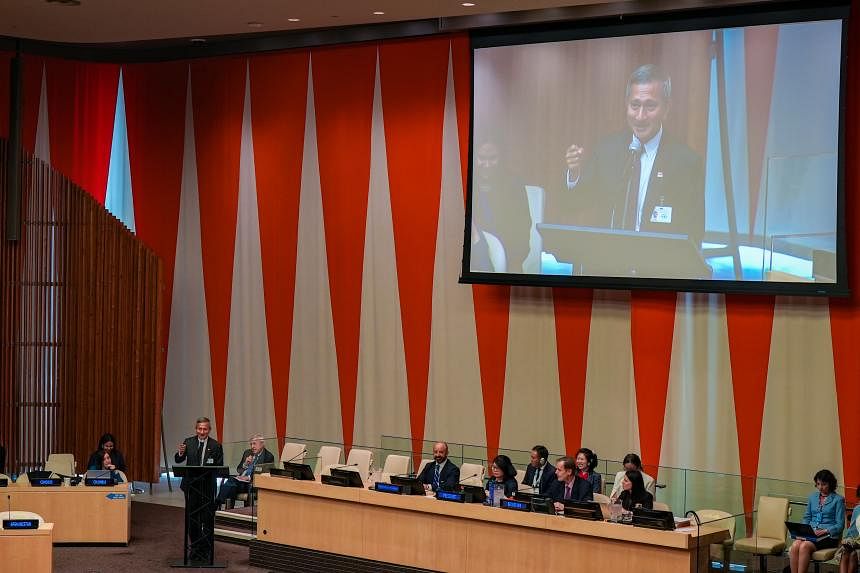WASHINGTON — The world’s first international treaty to protect the high seas is a “collective game changer” for conservation efforts, said Foreign Minister Vivian Balakrishnan at the formal adoption of the agreement on Monday.
But the international community’s work is not yet done, and it must work towards getting all countries to take part in the agreement and put it into effect, he said at a session of the United Nations in New York.
At least 60 nations must ratify it before it can go into effect.
The landmark treaty focuses on the conservation and sustainable use of marine life in the high seas, which lie outside national borders and therefore require global cooperation to manage.
Working out the deal was a Herculean effort that lasted more than 15 years, including four years of formal negotiations, before UN member states finalised the text of the treaty in March this year. Its adoption on Monday, without any objections, received a standing ovation from diplomats at the UN.
On Monday, Dr Balakrishnan hailed the treaty as a victory for international law, the world’s management of its shared resources, and multilateralism.
“It was only possible because of the political commitment of everyone to find a practical solution forward,” said the minister, delivering Singapore’s statement on marine biodiversity.
Calling it a win for international law, Dr Balakrishnan noted that the high seas compact was grounded in and built on the UN Convention on the Law of the Sea (Unclos), the universal legal framework for the governance of the ocean.
Unclos was adopted 40 years ago, and the Singapore Government has repeatedly credited it with playing a pivotal role in the nation’s development as a small state heavily reliant on maritime trade.
The minister said the treaty’s adoption was also a “step forward” for the UN’s goal of conserving and sustainably using the oceans, seas and marine resources.
Environmental groups have called the high seas treaty essential to meeting a critical UN target of conserving 30 per cent of the world’s land and ocean by 2030, which 190 world governments signed on to last December.
The treaty will enable the creation of marine protected areas in international waters, of which only 1 per cent is currently protected.
The High Seas Alliance, made up of over 50 non-governmental groups, said such zones can help conserve migratory marine species like whales.
Under the treaty, countries must also complete environmental impact studies for activities they want to carry out in international waters.
Dr Balakrishnan said the treaty’s adoption was a testament to what the UN can achieve when countries work together on a common goal.
He also lauded the diplomats who had worked on the agreement, thanking them for their efforts alongside Singapore’s oceans ambassador, Ms Rena Lee, who had helmed the treaty’s negotiations since 2018.
Singapore will sign the treaty when it opens for signature in September, and intends to ratify it as soon as possible, said Dr Balakrishnan, who called on all states to do likewise.
These steps must be taken before a treaty can enter into force and legally bind states that have agreed to it.
Dr Balakrishnan, who met US Secretary of State Antony Blinken and other lawmakers and officials last week in Washington, is also due to meet UN Secretary-General Antonio Guterres and UN General Assembly president Csaba Korosi while in New York. His working visit to the US ends on Tuesday.


